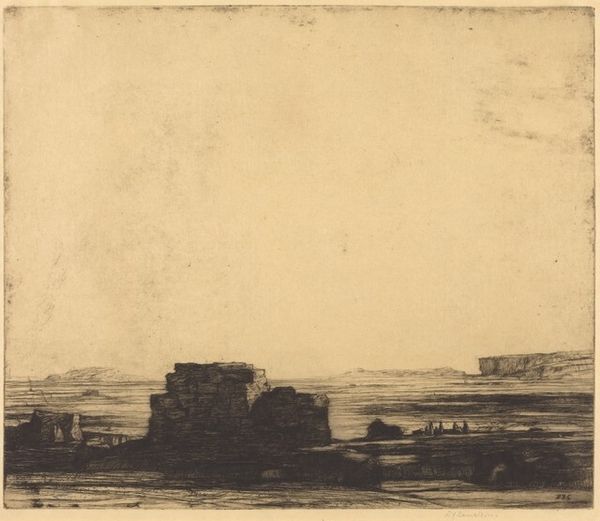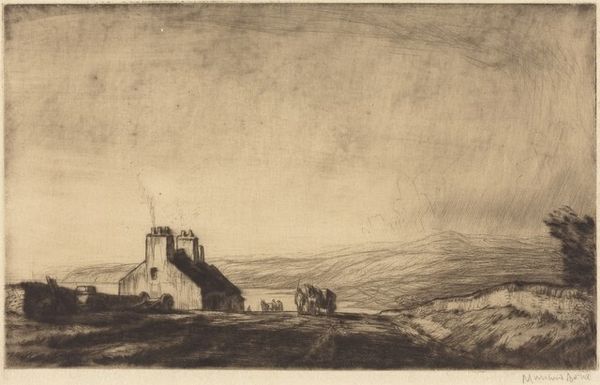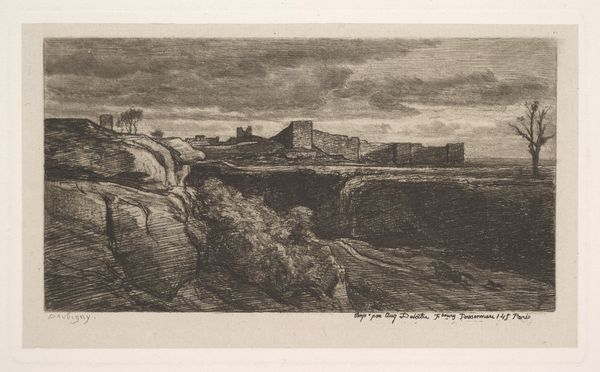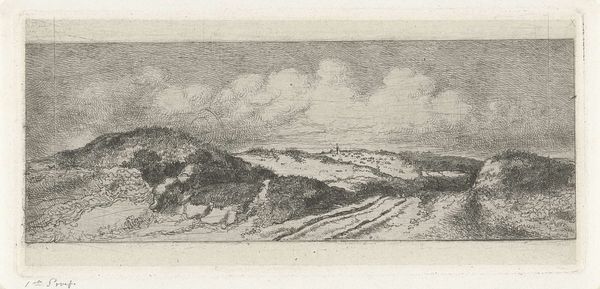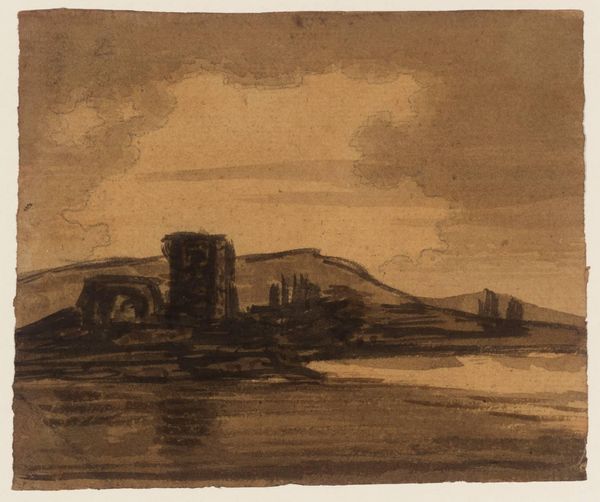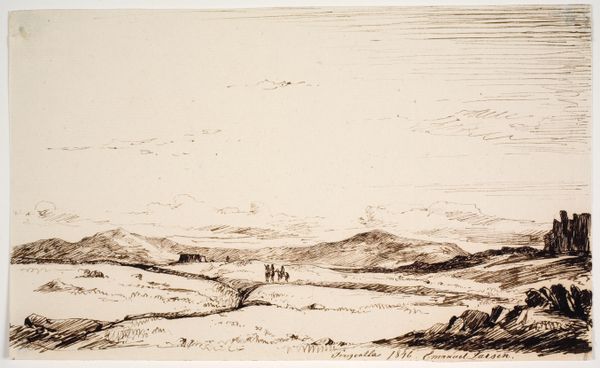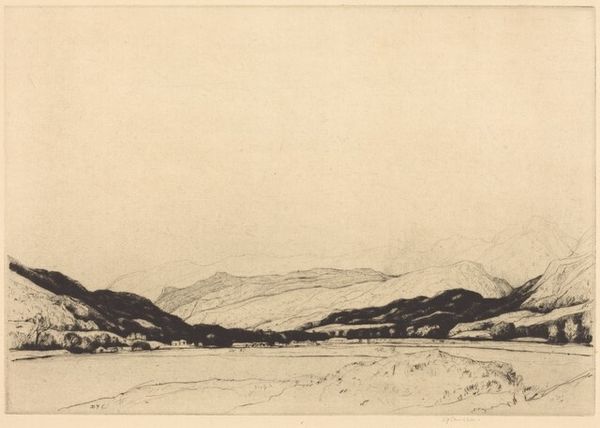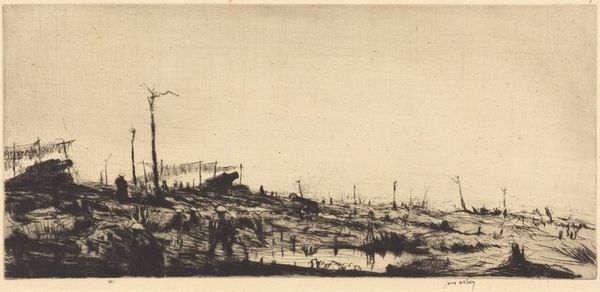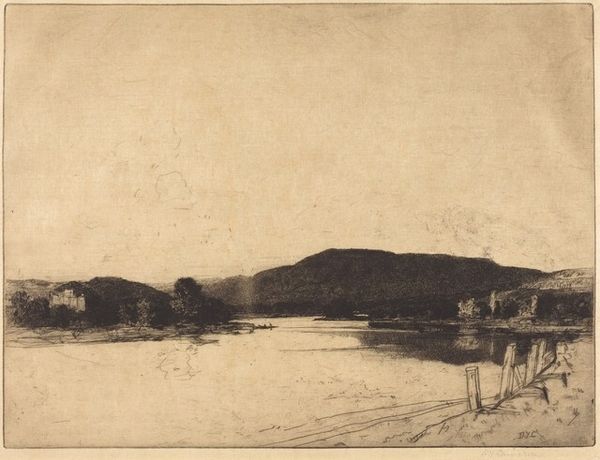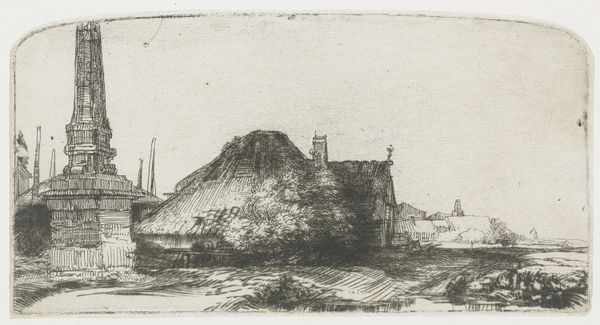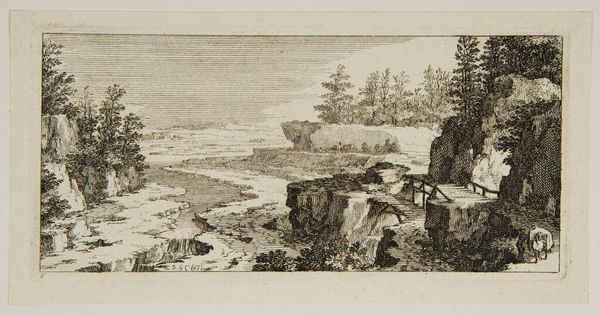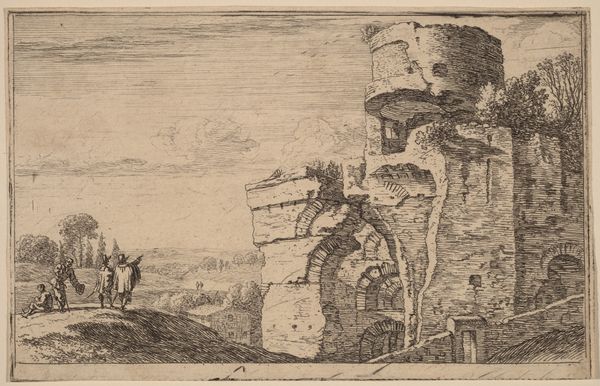
print, etching
# print
#
etching
#
landscape
#
line
#
realism
Dimensions: plate: 9.05 × 17.3 cm (3 9/16 × 6 13/16 in.)
Copyright: National Gallery of Art: CC0 1.0
Curator: It looks, at first glance, like a faded memory. Washed in sepia tones, a solitary croft sits at the edge of… everything? There’s something both comforting and deeply melancholic about it. Editor: Indeed. What we’re observing is Muirhead Bone’s etching, "First Study for the Ballantrae Road," dating back to 1907. Note the artist's utilization of etching— a printmaking technique involving corrosive acid—to capture the quietude of a rural landscape. But perhaps there's more to this image than meets the eye. Curator: Yes, there is something about this little building— the shadows almost completely swallow the left side of the piece and lead into a lonely sky and the lonely road from the title… I think there is more story than land in this scape. I find myself longing to fill that space, to bring color, sounds. I think that feeling is its genius. Editor: It certainly evokes longing. This image comes at a critical juncture in British history—the decline of rural industries, accelerated urbanization, and profound class divisions are all themes mirrored in visual art of the period. The solitary figures and humble croft might allude to the vulnerabilities of rural working-class families amid socio-economic transformations. Curator: It seems like Bone wanted to give respect to those forgotten ones. He makes them solid while, at the same time, dwarfing them under this tremendous, looming countryside, but they stand strong together… you can almost imagine their breath in the cool air. A family, facing hardship together. And despite it all—beautiful. I love this perspective of humanity. Editor: Bone does more than simply present an aesthetic vision; he seems to pose crucial questions about land ownership, labor exploitation, and the state’s responsibilities to its citizens. His technical virtuosity enhances the work’s emotional resonance but it’s difficult to divorce his work from his era’s sociopolitical tensions. Curator: That’s where the richness is though, right? Finding that tiny string that connects a time past with a feeling present. Editor: Precisely. That is what keeps history alive.
Comments
No comments
Be the first to comment and join the conversation on the ultimate creative platform.
